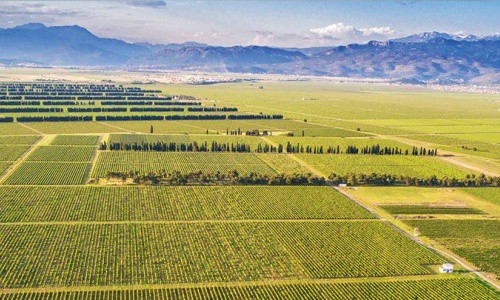SAS and its IoT ecosystem partners apply advanced IoT analytics to help tackle major challenges in cold chain logistics, flood prediction, energy forecasting and livestock wellness.
By deploying connected sensors, companies can use IoT analytics to deliver temperature-sensitive COVID vaccines, analyse crop data to deliver higher-quality food, improve energy forecasting to reduce utility bills, and protect people and property from dangerous flooding.
For some time now, SAS has been working with key partners including Microsoft Azure and Stress Engineering to apply customisable analytics to cold chain logistics integrity challenges.
“We use data and analytics in the cloud to help protect the efficacy of temperature-sensitive medications while simultaneously addressing security and regulatory mandates,” said Jason Mann, vice president of IoT at SAS. “It helps companies maximise efficiency, align demand, and minimise waste and fraud.
According to a 2019 study by IQVIA Institute for Human Data Science, failures in temperature-controlled logistics – like those required for storing and transporting the COVID vaccine – result in US$35 billion in annual biopharma losses. IQVIA anticipates cold chain logistics will account for nearly a quarter of pharmaceutical companies’ R&D budgets in 2021 and beyond.
IoT analytics in crop and livestock farming
SAS has been collaborating with partners such as like Ernst & Young, Semtech , DunavNET and a host of universities and colleges to apply IoT analytics in precision agriculture.
“It helps field crop and livestock farming organisations enhance quality and maximise yield, so the world’s food supply is safe and abundant.” Mann said.
Again, through connected sensors, crop and livestock farmers to monitor the situation in the fields in real-time.
According to an IDC FutureScape: Worldwide Agriculture 2021 Predictions, 75% of livestock farmers will use wearables by 2026 to provide real-time information about animal health and activity levels. This will improve profits and operational efficiency. The experts also expect 35% of farmers will use drones to monitor and manage field crops and animals to reduce labour costs and manage more acreage.
By using data streaming from sensors integrated with the LoRaWAN standard on livestock or smart drones surveying field crops, SAS analytics help farmers protect crops, increase yields and meet customer demand.
One company that hugely benefitted in using IoT analytics is the 5,600 -acre 13. Jul – Plantaze, which owns Europe’s largest single complex vineyard. The company produces more than 20 million kilograms of grapes and approximately 15 million bottles of wine annually.
13. Jul - Plantaze uses SAS analytics deployed by partners DunavNET and the University of Donja Gorica to monitor the presence of grape moths, which can cause significant problems.
“The SAS analytics built into the DunavNET agroNET solution have helped us move our operation into the digital future,” said Dr. Vesna Maraš, director of the development sector at Plantaze. “Monitoring plant health and pests is key, but so is modernising our entire viticulture and



